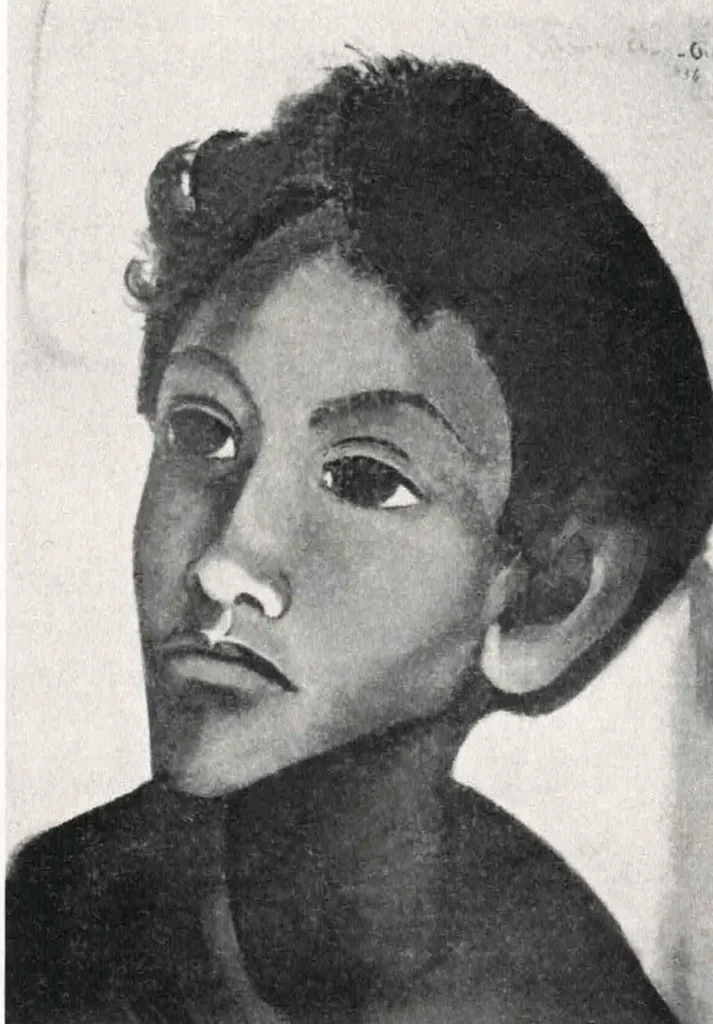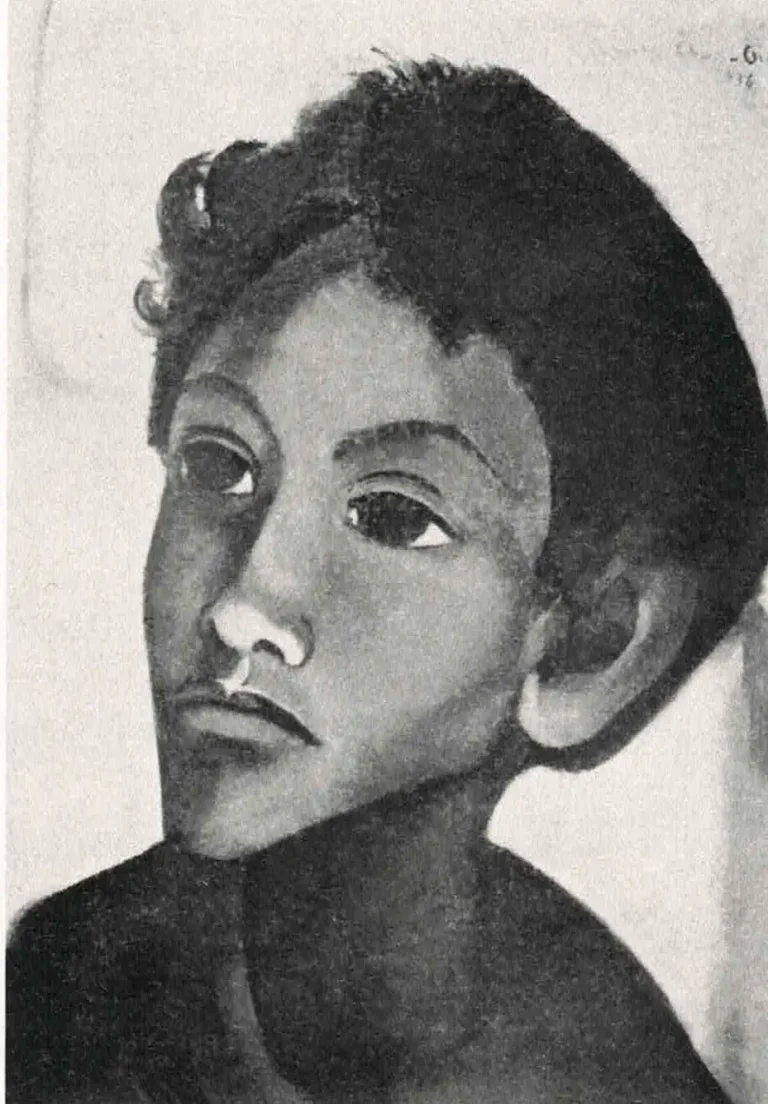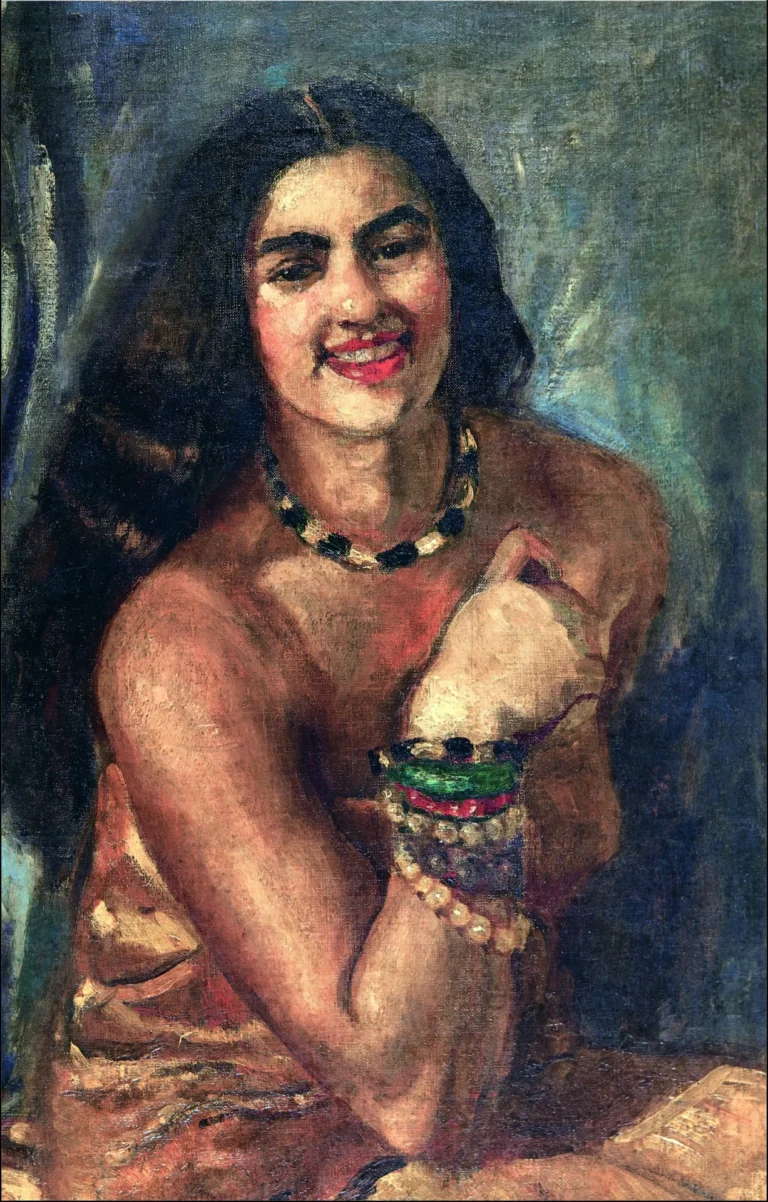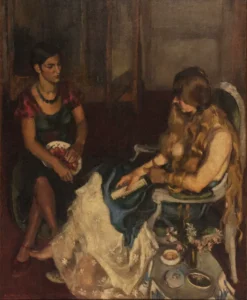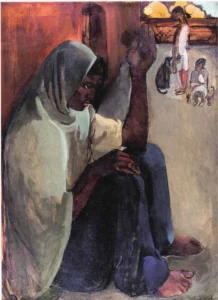The little untouchable (1936)
Amrita Sher-Gil's The little untouchable. painted in March 1936, captures the essence of India's impoverished communities. This artwork embodies her unique approach to illustrating daily life and the challenges faced by the underprivileged, which became a central theme in her work after returning to India. Influenced by precolonial Indian art forms, this painting reflects the cultural richness and complexity of the society she aimed to represent. Despite being a significant piece, its current whereabouts remain unknown, adding an air of mystery to Sher-Gil's legacy.
March 1936
About the Artwork
The story behind The little untouchable reveals Amrita Sher-Gil's deep commitment to highlighting the plight of India's marginalized classes. Painted during a transformative period in her career, this artwork represents her active engagement with Indian realities, especially after her return from Europe. Sher-Gil's innovative style fuses traditional Indian artistic influences with Western techniques, resulting in a distinctive voice that resonated deeply with her audience. Through her compassionate portrayal of the untouchable community, she sought to raise awareness about social injustices and encourage empathy towards the oppressed. Sher-Gil's work has left an indelible mark on the art world, further amplified by the fact that many of her pieces, including this one, are often lost to history or remain undocumented.
Did You Know
Liked what you see? Add it to your collection.
Enjoyed reading? Share it.
... continued
The Little Untouchable
is a painting created by Amrita Sher-Gil in 1936. Here are some key points about this artwork:
Creation and Exhibition
The painting was produced in March 1936, during a period when Sher-Gil was actively engaging with Indian themes and subjects in her work.
Style and Influence
This painting reflects Sher-Gil's focus on depicting the everyday life and struggles of the Indian poor, a theme that became central to her artistic mission after her return to India in 1934. Her work was heavily influenced by precolonial Indian art styles, including the Mughal and Pahari schools of painting, as well as the cave paintings at Ajanta.
Current Status
The current whereabouts of The little untouchable are listed as unknown. This is similar to several other works by Sher-Gil, whose locations are not always documented or may have changed over time.
Significance
The little untouchable is part of Sher-Gil's body of work that highlights her unique interpretation of Indian life and her commitment to portraying the lives of the marginalized and poor. This painting, like many of her others, contributes to her legacy as a pioneering figure in modern Indian art.




